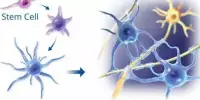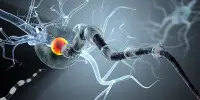Neurodevelopmental disorders are defined by a set of symptoms that are caused by differences in a child’s brain and nervous system. While other mental health conditions may be caused in part by neurological differences, teen neurodevelopmental disorders are early-onset conditions in which neurological factors play a larger role. The severity and treatment of neurodevelopmental disorders vary greatly. Treatment for adolescent neurodevelopmental disorders necessitates programs that are individually tailored to the symptoms and challenges; no two cases are alike.
According to a new study, therapeutic interventions for neurodevelopmental disorders may be more effective if administered during the early stages of brain development.
“In order to stop the progression of neurodevelopmental disorders, it is important to identify how and when brain circuits are changing during development. Our study identifies when circuits are altered in addition to how brain circuits are corrected,” said the study’s senior author Molly Huntsman, PhD, associate professor at the University of Colorado Skaggs School of Pharmacy and Pharmaceutical Sciences located on the University of Colorado Anschutz Medical Campus.
In order to stop the progression of neurodevelopmental disorders, it is important to identify how and when brain circuits are changing during development. Our study identifies when circuits are altered in addition to how brain circuits are corrected.
Molly Huntsman
The research, published in The Journal of Neuroscience, focuses on Fragile X Syndrome (FXS), a common cause of intellectual disability, autism, and anxiety disorders.
“There are currently no approved or effective therapies targeting specific pathophysiology underlying the clinical manifestations of FXS,” Huntsman explained. “We hope to provide answers for when and how to treat FXS in order to help with therapeutic options in the future.”
Researchers from the University of Colorado Skaggs School of Pharmacy identified potential causal circuit-level changes during a critical period of brain development that is amenable to therapeutic intervention. They concentrated on the amygdala, the brain region that processes fear and anxiety.

They discovered a critical period of increased circuit plasticity in early brain development using an FXS mouse model. They discovered that fear learning emerges in the brain during these periods of increased plasticity. At the same time, they demonstrated that early intervention helps.
The findings suggest that critical period plasticity in the amygdala is increased and may be shifted to earlier developmental time points. This could result in “maladaptive” plasticity, which can be treated with therapeutic intervention at key developmental stages. According to the study, the age of the patient at the time of treatment is important because early pharmacological intervention was shown to be effective in reducing fear learning in the mouse model.
“This is extremely significant and addresses a critical barrier for understanding how circuits develop in a mouse model of autism and intellectual disability,” Huntsman said. “It’s even more important for therapeutic intervention-directed treatment options.”
According to the researchers, future clinical trials should concentrate on human critical periods of development.
Many neurodevelopmental disorders manifest their signs and symptoms when a child is young, usually around the preschool years. However, in some cases, such as schizophrenia, symptoms may appear in late adolescence or early adulthood.
















